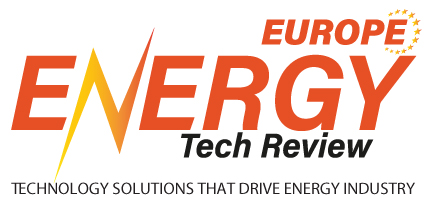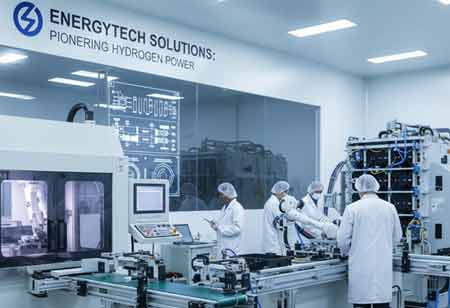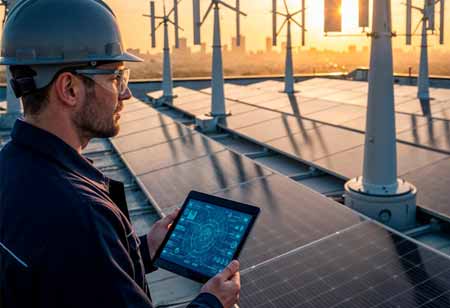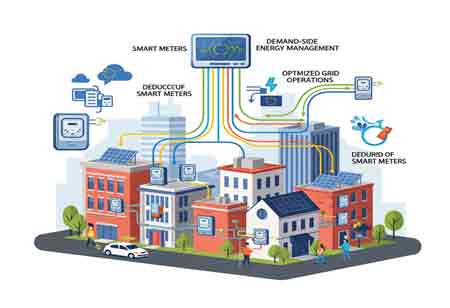CLOSE
Specials
I agree We use cookies on this website to enhance your user experience. By clicking any link on this page you are giving your consent for us to set cookies. More info
Be first to read the latest tech news, Industry Leader's Insights, and CIO interviews of medium and large enterprises exclusively from Energy Tech Review
Thank you for Subscribing
CapEx Flows and the Rise of Energy Infrastructure Manufacturing
The European energy sector is evolving with increased investment in local industrial ecosystems, focusing on renewable manufacturing, infrastructure, and technology to enhance energy security and resilience.
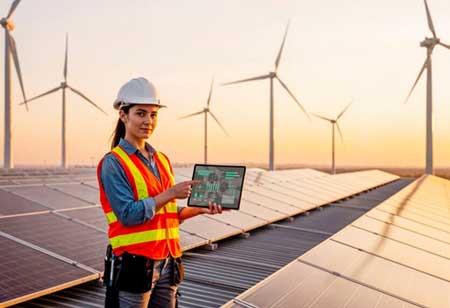
By
Energy Tech Review | Monday, November 24, 2025
Stay ahead of the industry with exclusive feature stories on the top companies, expert insights and the latest news delivered straight to your inbox. Subscribe today.
The European energy landscape is characterised not merely by the deployment of renewable capacity but by a profound deepening of the industrial base supporting it. Capital markets, institutional investors, and sovereign funds are increasingly aligning around a core thesis: that energy security and decarbonization require a localised, resilient industrial ecosystem. This has triggered a surge in capital expenditure (CapEx) directed toward factories, specialised construction fleets, and grid modernisation hardware. The narrative has evolved from "financing megawatts" to "financing the machine that builds the megawatts."
Solar Photovoltaics: Beyond Deployment to Industrial Resilience
The European solar investment landscape has entered a more advanced phase, marked by a decisive reorientation of capital toward upstream activities. While deployment across residential and utility-scale segments remains strong, investors are increasingly prioritising reshoring photovoltaic supply chains to enhance regional resilience and reduce reliance on imports. This transition is underscored by substantial commitments to cutting-edge manufacturing capabilities, particularly facilities designed to produce next-generation cell architectures such as TOPCon and HJT. Current capital flows are focused on securing the specialised equipment, precision tooling, and automated systems necessary to deliver high-efficiency, low-degradation modules that align with Europe’s quality and sustainability standards.
Simultaneously, investment is expanding into the supporting industrial ecosystem required to stabilise and scale domestic solar production. Key areas of focus include polysilicon refinement, solar-grade glass manufacturing, and other critical inputs that underpin module assembly. Private equity participation is accelerating sector consolidation, especially among a growing number of system and tracker technology providers, aiming to create vertically integrated platforms capable of delivering comprehensive hardware solutions. Collectively, these shifts signal a strategic effort to build a robust, end-to-end European solar value chain positioned for long-term competitiveness.
Wind Energy: The Offshore Industrial Complex
The wind industry is undergoing a clear shift toward offshore development, drawing an increasingly significant share of heavy-industry capital. The scale and complexity of offshore projects are accelerating demand for advanced maritime assets, particularly next-generation installation vessels capable of handling turbines exceeding 15 MW. As legacy jack-up vessels reach obsolescence, investment is flowing into shipyards building larger, crane-equipped fleets designed for deep-water operations. This vessel renewal cycle has emerged as a core segment of green-infrastructure financing, viewed by institutional investors as a durable, yield-oriented industrial opportunity.
In parallel, substantial capital is being committed to modernising port and harborside logistics to support offshore wind deployment. Investors are acquiring and upgrading quayside facilities to enable turbine marshalling, pre-assembly, and heavy-lift load-out activities, often requiring reinforced pavements and deeper navigation channels. These emerging “energy ports” are rapidly becoming high-value infrastructure assets, drawing interest from pension funds and other long-term capital providers seeking stable, inflation-linked returns backed by strategic industrial demand.
Hydrogen investment is shifting decisively from research-driven initiatives to large-scale industrial capital expenditure. The industry’s priority is the rapid expansion of electrolysers' manufacturing capacity, transitioning from manually assembled pilot units to fully automated gigafactories. The most significant capital inflows are directed toward establishing serial production lines for PEM and Alkaline electrolysers, including advanced robotics, automated stack assembly systems, and rigorous quality-control infrastructure. This industrialisation marks a pivotal evolution, moving hydrogen equipment from specialised, custom-engineered systems to standardised, commercially scalable products.
Simultaneously, investment is accelerating across the midstream segment, particularly in pipeline and transport infrastructure. Funding supports the development of high-pressure valves, compressors, and retrofit solutions to adapt existing natural gas networks for hydrogen transmission. Sovereign wealth funds and infrastructure-focused financial institutions are playing a key role in underwriting these large-scale upgrades, enabling the conversion of conventional pipelines into dedicated hydrogen corridors and laying the groundwork for a robust, interconnected hydrogen supply chain.
Energy Storage and Grid Modernisation: The Flexibility Asset Class
A notable shift in investment strategy is the recognition of flexibility as a core asset class, driven by the growing complexity of renewable-dominated grids. As variable generation saturates supply networks, technologies that support grid stability—particularly batteries and advanced smart-grid systems—are commanding premium valuations. Utility-scale Battery Energy Storage Systems have emerged as a central focus, with capital prioritising large, containerised solutions capable of frequency regulation and load shifting. This momentum extends beyond battery cells into essential balance-of-system manufacturing, including thermal management, fire-suppression technologies, and purpose-built power conversion systems engineered to handle grid-scale volatility.
Simultaneously, grid infrastructure itself is undergoing unprecedented levels of investment. High-Voltage Direct Current converter stations, subsea cable production, and associated manufacturing capacity are expanding rapidly as countries pursue cross-border grid interconnection to optimise renewable flows. Demand has pushed subsea cable factories to full capacity, spurring new rounds of expansion funding. Similar investment is flowing into transformers, switchgear, and digital substation technologies, all of which are critical to modernising, reinforcing, and digitising transmission and distribution networks.
The recent years mark the end of the "easy money" phase of renewable experimentation and the beginning of the "hard money" phase of industrial scaling. European investment flows have decisively shifted toward the physical equipment and heavy infrastructure required to execute the energy transition. From the automated floors of solar gigafactories to the shipyards building offshore installation vessels, capital is now anchoring the tangible assets of a new industrial economy. This re-industrialisation creates a robust foundation for the future, ensuring that a domestic, capital-rich equipment sector supports the continent’s green energy goals.

Copyright © 2025 Energy Tech Review. All rights reserved
